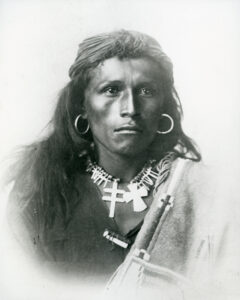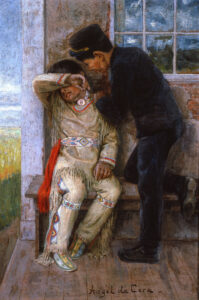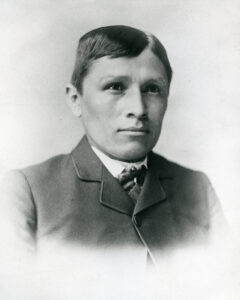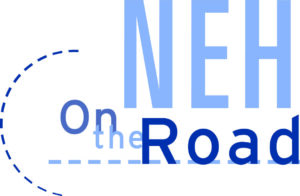August 31, – October 20, 2024

Children praying before bedtime at Phoenix Indian School, June 1900; photograph, variable size; Courtesy of National Archives and Records Administration, Washington, DC
Away From Home: American Indian Boarding School Stories, a National Endowment for the Humanities national traveling exhibition, will make its only South Carolina stop at the Upcountry History Museum, August 31 – October 20, 2024.
Beginning in the 1870s, the US government attempted to educate and assimilate Native Americans into “civilized” society by placing children – of all ages, from thousands of homes and hundreds of diverse tribes – in distant, residential boarding schools. Many were forcibly taken from their families and communities and stripped of all signs of their culture, even forbidden to speak their own language among themselves.
Up until the 1930’s, students were trained for domestic work and trade in a highly regimented environment. Many children went years without familial contact, and these events had a lasting, generational impact.
Some suffered in silence, some struggled bitterly, some succumbed to physical abuse, Tuberculosis or Influenza and lost their lives. Others flourished and built a new sense of self within a wider world, while preserving their culture in their hearts.
The 2000 square foot exhibition explores the off-reservation boarding schools through a kaleidoscope of first-person voices. Stories of student resistance, accommodation, creative resolve, devoted participation, escape and faith in oneself and heritage, speak individually across eras. Visitors will explore photographs, artwork, objects, interviews, interactive timelines and immersive environments, including classroom and dormitory settings.
Boarding schools were designed to remake Native Americans, but it was Native Americans who changed the schools. The exhibit also examines these unintended outcomes, such as a sense of “Pan-Indianism,” the growth of support networks on campuses, and the demand for reform by advocates. Following graduation, many students became involved in tribal political offices, the formation of civil rights, and Native sovereignty organizations.



Support provided by:






